
- Agriculture Exams
- Engineering Entrance Exams
- Exams to study abroad
- Law Entrance Exams
- MBA Entrance Exams
- Medical Entrance Exams
- Research Entrance Exams
- School Entrance Exams
- Teaching Entrance Exams
- University Entrance Exams
- Abroad Education
- Biographies
- Career Options
- Career Tips
- Distance Education
- Entrepreneur Guide
- Online Education
- Scholarships
- Skill development schemes
- Spoken English
- Student Loans
- Useful websites
- Volunteer Programs
- Defence Jobs
- AP Geography
- Biology Topics
- Indian Constitution
- Current Affairs Bits 2022
- Current Affairs Bits 2023
- Current Affairs Bits 2024
- Important Dates
- Magazine 2022
- Magazine 2023
- Magazine 2024
- Andhra Pradesh
- School Education
- Universities


సోలార్ సిస్టమ్ : గ్రహాలు మరియు ఉపగ్రహాలు
సౌరవ్యవస్థ గురించి తెలుసుకునే ముందు విశ్వం (యూనివర్స్) అంటే ఏంటో తెలుసుకోవాలి. విశ్వం అంటే అనంతమైన స్పేస్ అని అర్ధం. ఇందులోనే సూర్యుడు, గ్రహాలు, నక్షత్రాలు, మన గెలాక్సీ మరియు దాదాపు రెండు ట్రిలియన్ల ఇతర గెలాక్సీలు అమరి ఉన్నాయి. బిగ్ బ్యాంగ్ థియరీ ప్రకారం ఒక బలమైన విస్ఫోటనం జరగడం ద్వారా విశ్వం ఆరంభమైంది.
ఈ విస్ఫోటనం వలనే సమయం, గ్రహాలు, నక్షత్రాలు, పాలపుంతలు ఏర్పడ్డాయి. వీటితో పాటుగా విశ్వంలో వివిధ రూపాల్లో ఉండే పదార్థం, శక్తి కూడా ఉద్బవించింది. విశ్వం గురించి అధ్యయనం చేసే శాస్త్రాన్ని కాస్మొలోజి అంటారు.
ప్రాచీన గ్రీక్ మరియు భారతీయుల తత్వవేత్తల మరింత లోతైన ఆలోచన నుండి భూమి ప్రధాన కేంద్రంగా కొన్ని ఖగోళ పరిశీలనలు జరిగాయి. కొన్ని శతాబ్దాల తర్వాత కోపర్నికస్ సూర్యుడు ఆధారిత సూర్యకేంద్ర మోడల్ అభివృద్ధి పరిచాడు. ఈ రెండు సిద్ధాంతాలను ఆధారంగా చేసుకుని న్యూటన్ విశ్వ గురుత్వాకర్షణ సిద్ధాంతాన్ని సృష్టించాడు. దీన్ని ఆధారంగా చేసుకుని గ్రహాల చలనం, సౌరవ్యవస్థ, గెలాక్సీ మరియు విస్వంతరాల గురించి పూర్తిస్థాయి పరిశోదనలు జరిగాయి.
విశ్వం అనేది అపరిమిత గెలాక్సీల సమ్మేళనం. ప్రతి గెలాక్సీలో ఉండే కొన్ని బిలియన్ల నక్షత్రాలలో సూర్యుడు ఒకటి. సూర్యుడు గురుత్వాకర్షణ పరిధిలో 8 గ్రహాలు నిర్దిష్ట కక్ష్యలలో పరిభ్రమిస్తాయి. సూర్యుడు, దాని చుట్టూ తిరిగే గ్రహాలను కలిపి ఒక సౌరకుటుంబం అంటారు.
ఇలాంటి అనేక సౌరకుటుంబాలు కలిసి ఒక గెలాక్సీ ఏర్పడుతుంది. గెలాక్సీలన్నీ కలిసి విశ్వాన్ని సృష్టిస్తాయి. విశ్వం పరిధి 93 బిలియన్ కాంతి సంవత్సరాలు అని అంచనా. ఒక కాంతి సంవత్సరం అనగా ఒక ఏడాదిలో కాంతి ప్రయాణం చేయగలిగిన దూరం అని అర్ధం.
సౌరకుటుంబంలో గ్రహాలు
సౌరవ్యవస్థ ప్రశ్నలు & సమాదానాలు.

తెలుగు ఎడ్యుకేషన్
Get latest updates on Jobs, Career, Exams, Admissions, Study Abroad, scholarships, Student Loans, Current Affairs etc
Related Articles

రాష్ట్రాల వారీగా లోక్సభ మరియు రాజ్యసభ స్థానాలు

Union and its Territory in Indian constitution in Telugu

Indian constitution amendments in Telugu | Indian Polity
You might also like.

టీఎస్పీఎస్సీ గ్రూపు 2 ఎగ్జామ్ విధానం & సిలబస్

తెలుగులో రోజువారీ కరెంట్ అఫైర్స్ : 27 సెప్టెంబర్ 2023

తెలుగులో రోజువారీ కరెంట్ అఫైర్స్ : Current Affairs 03 August 2023
Post comment స్పందనను రద్దుచేయి.

Planets name in Telugu | తెలుగులో గ్రహాల పేరు
Names In Hindi Team

As an affiliate, we may earn a commission from qualifying purchases. We get commissions for purchases made through links on this website from Amazon and other third parties.
Currently, there are eight planets and one dwarf planet in the universe. And here we have given all the Planets names in Telugu తెలుగులో గ్రహాల పేరు.
Here we have given all the 8 Planets names in Telugu with images and some information and facts about those Planets.
Solar System Planets Name in Telugu and English with Images
8 planets name in telugu and english| తెలుగులో గ్రహాల పేరు.
Some amazing facts exist about our solar system. The planets within the Solar System are all unique in their characteristics and behaviours.
Here we have compiled some of the famous facts about each of the 8 planets in our Solar System.
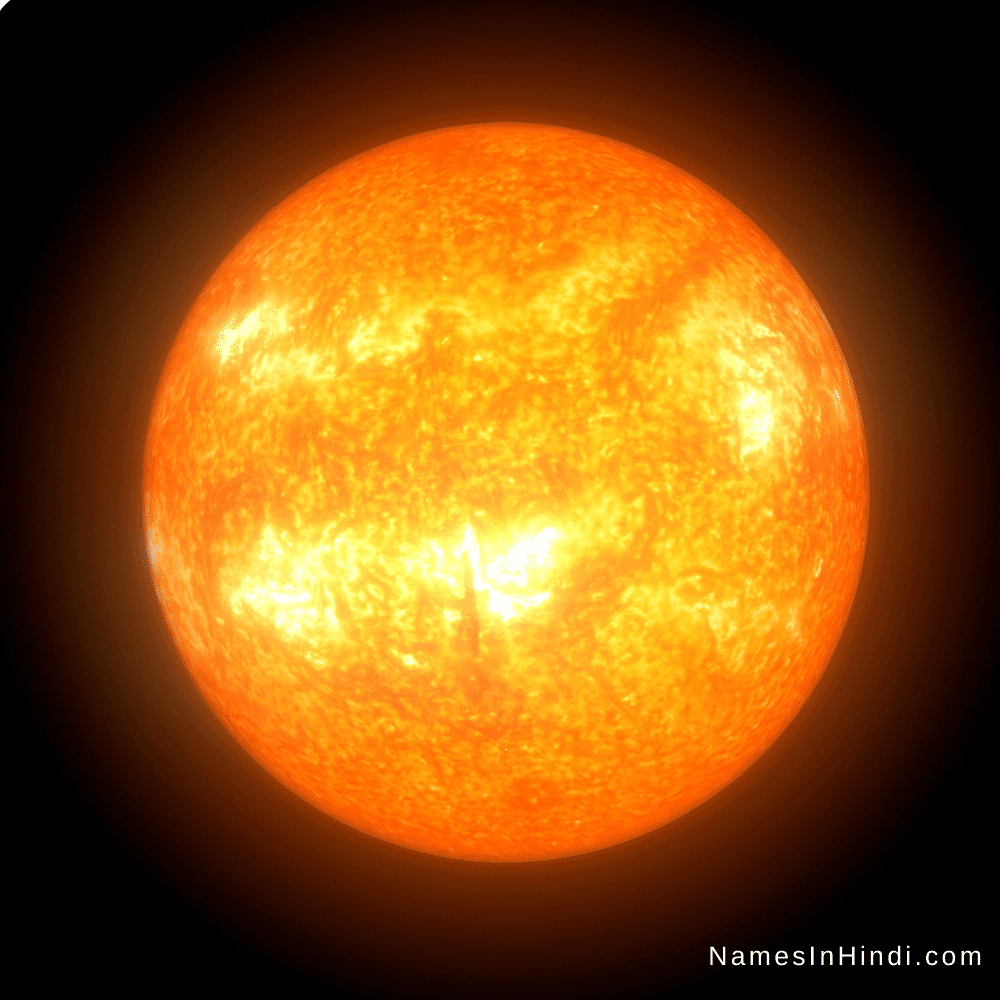
సూర్యుడు సౌర వ్యవస్థ యొక్క నక్షత్రం. ఇది భూమిపై జీవించడానికి అత్యంత ముఖ్యమైన శక్తి వనరు. పైన పేర్కొన్న విధంగా సూర్యుడికి ఎనిమిది గ్రహాలు ఉన్నాయి.
- సూర్యుడు ఒక జెయింట్ స్టార్
- సూర్యుడు మన గ్రహం దగ్గరగా ఉన్న నక్షత్రం
- భూమి సూర్యుని చుట్టూ తిరుగుతుంది.
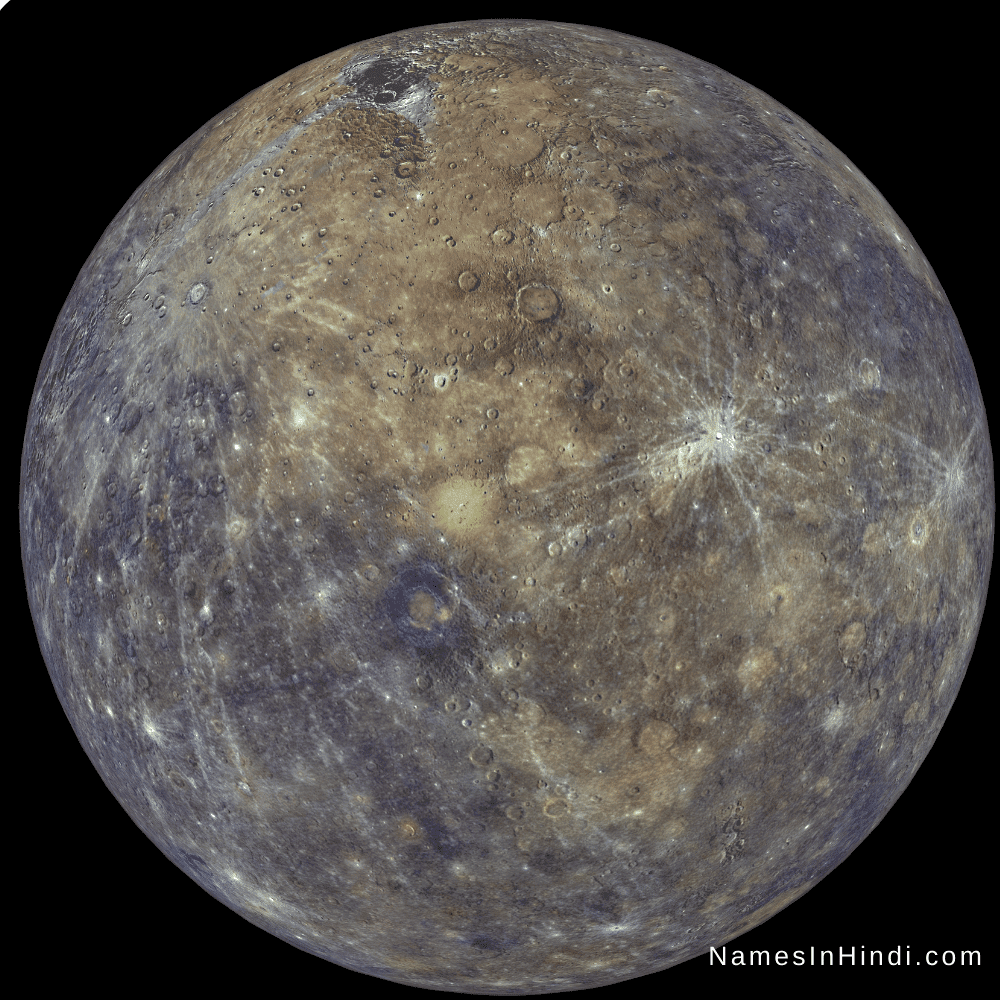
మెర్క్యురీ సౌర వ్యవస్థలో అతి చిన్న గ్రహం మరియు సూర్యుడికి దగ్గరగా ఉన్న గ్రహం. మెర్క్యురీకి చంద్రులు లేరు.
- సౌర వ్యవస్థలో మెర్క్యురీ అత్యధిక క్రేటర్లను కలిగి ఉంది
- మెర్క్యురీ ప్రతిరోజూ చిన్నదవుతోంది
- ఇతర గ్రహాల కంటే మెర్క్యురీ సూర్యుని చుట్టూ వేగంగా తిరుగుతుంది
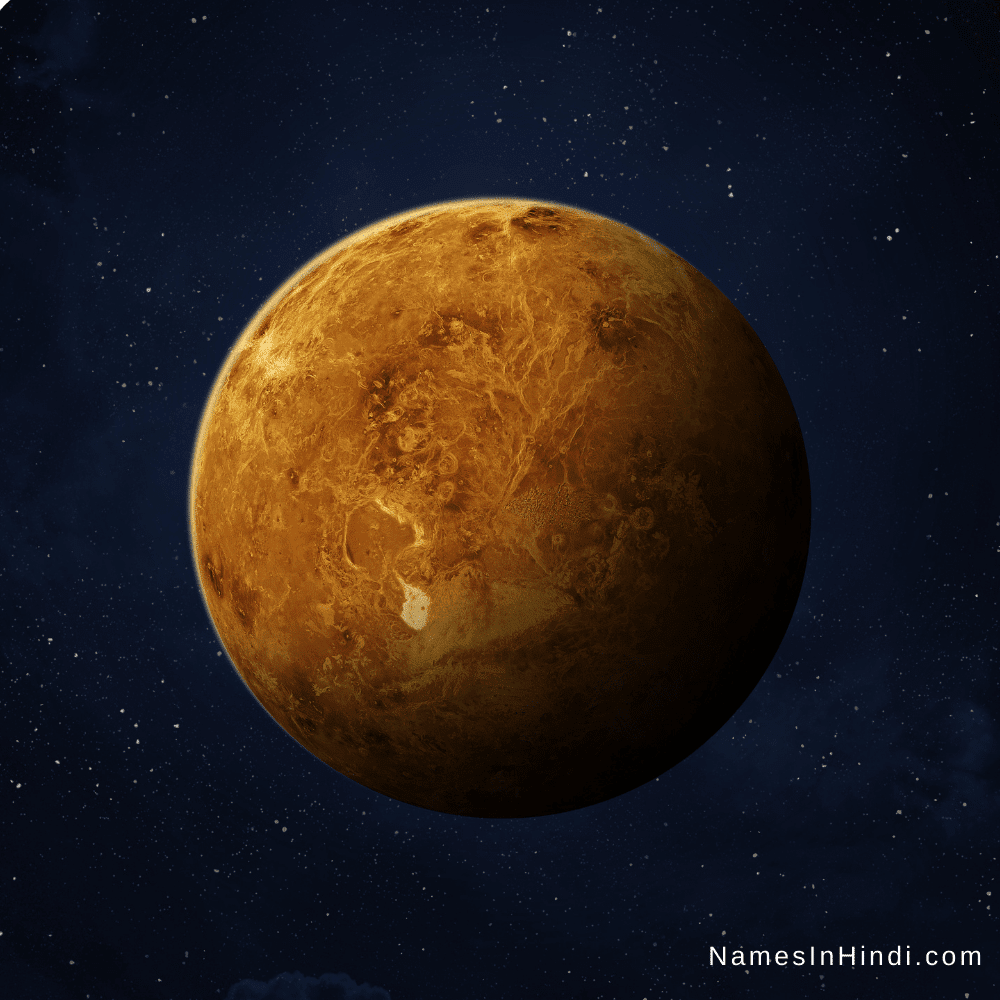
శుక్రుడు సూర్యుడి నుండి రెండవ గ్రహం. శుక్రుడిని భూమి యొక్క “సోదరి గ్రహం” అని కూడా పిలుస్తారు ఎందుకంటే దాని పరిమాణం సమానంగా ఉంటుంది.
- శుక్రుడిపై ఒక రోజు ఒక సంవత్సరం కంటే ఎక్కువ
- చంద్రుని తర్వాత రాత్రి ఆకాశంలో శుక్రుడు రెండవ ప్రకాశవంతమైన సహజ వస్తువు
- శుక్రుడు చాలా ఇతర గ్రహాలకు వ్యతిరేక దిశలో తిరుగుతాడు.
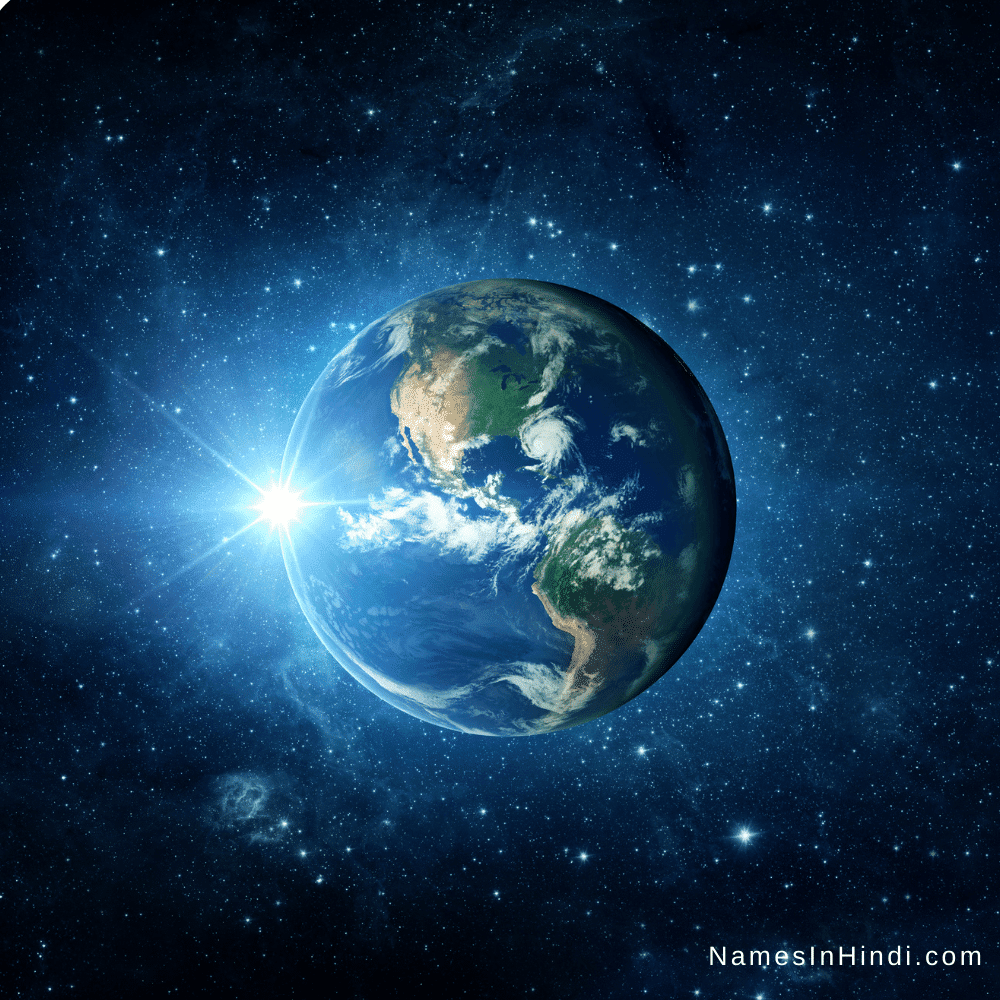
భూమి ఉనికిలో ఉన్నట్లు మాత్రమే తెలిసిన ప్రదేశం. ఇది ఒక సహజ ఉపగ్రహాన్ని కలిగి ఉంది, చంద్రుడు, సౌర వ్యవస్థలో ఒక భూ గ్రహం యొక్క ఏకైక పెద్ద ఉపగ్రహం.
- మన సౌర వ్యవస్థలో భూమి సూర్యుడి నుండి మూడవ గ్రహం
- వ్యాసం ద్వారా సౌర వ్యవస్థలో ఐదవ అతిపెద్ద గ్రహం.
- భూమి దాదాపు గోళం
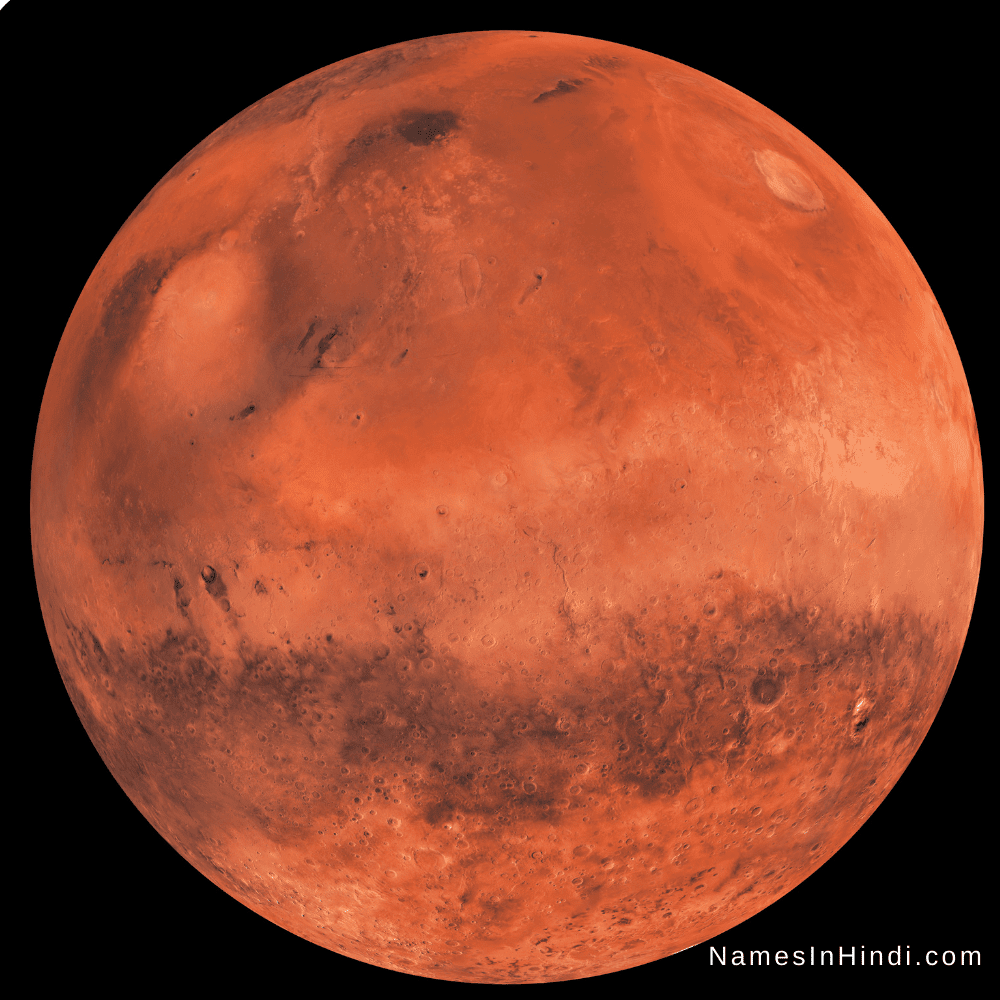
మార్స్ సూర్యుడి నుండి నాల్గవ గ్రహం మరియు సౌర వ్యవస్థలో రెండవ అతి చిన్న గ్రహం.
- అంగారకుడిలో రెండు చిన్న సహజ ఉపగ్రహాలు ఉన్నాయి (డీమోస్ మరియు ఫోబోస్)
- అంగారకుడు భూమి యొక్క వ్యాసంలో దాదాపు సగం
- అంగారకుడిని ‘రెడ్ ప్లానెట్’ అని కూడా అంటారు, ఎందుకంటే, ఇది ఎరుపు!
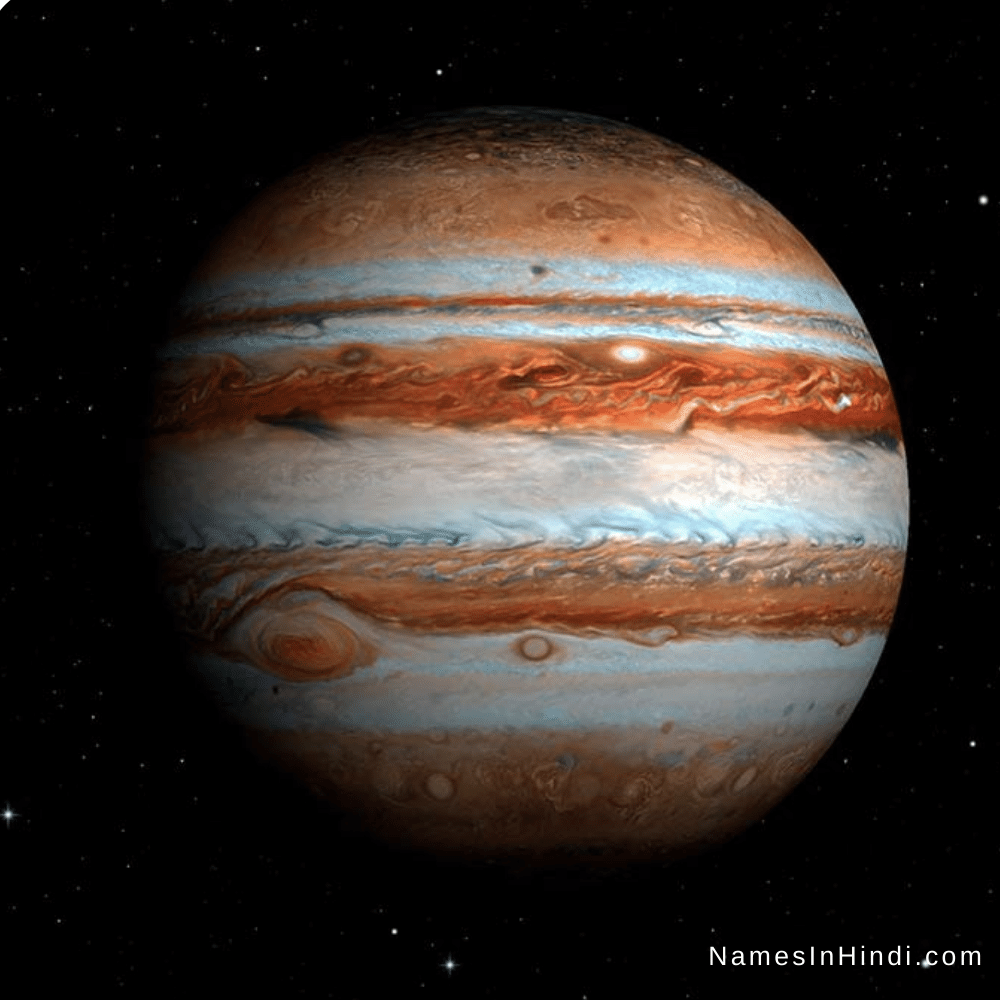
బృహస్పతి సూర్యుడి నుండి ఐదవ గ్రహం మరియు సౌర వ్యవస్థలో అతిపెద్దది. బృహస్పతి సౌర వ్యవస్థలో అత్యంత పురాతనమైన గ్రహం
- సౌర వ్యవస్థలో బృహస్పతి అతిపెద్ద గ్రహం
- బృహస్పతి సౌర వ్యవస్థలో అత్యంత వేగంగా తిరుగుతున్న గ్రహం:
- బృహస్పతికి ఉంగరాలు ఉన్నాయి
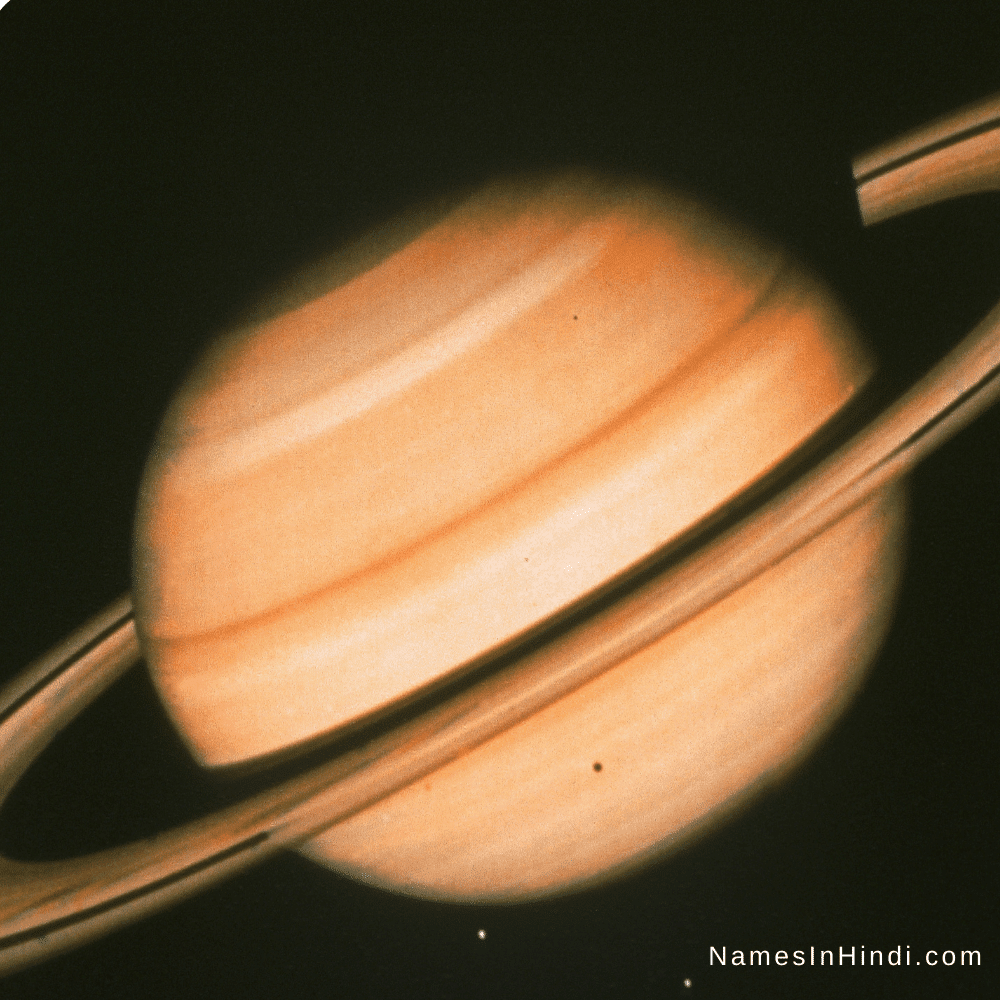
శని సూర్యుడి నుండి ఆరవ గ్రహం మరియు బృహస్పతి తరువాత సౌర వ్యవస్థలో రెండవ అతిపెద్ద గ్రహం.
- శనిగ్రహానికి 62 చంద్రులు ఉన్నారు
- మీరు మీ స్వంత కళ్ళతో శనిని చూడవచ్చు wn eyes
- నీటి కంటే తక్కువ సాంద్రత కలిగిన సూర్యమండలంలోని ఏకైక గ్రహం శని – దాదాపు 30% తక్కువ
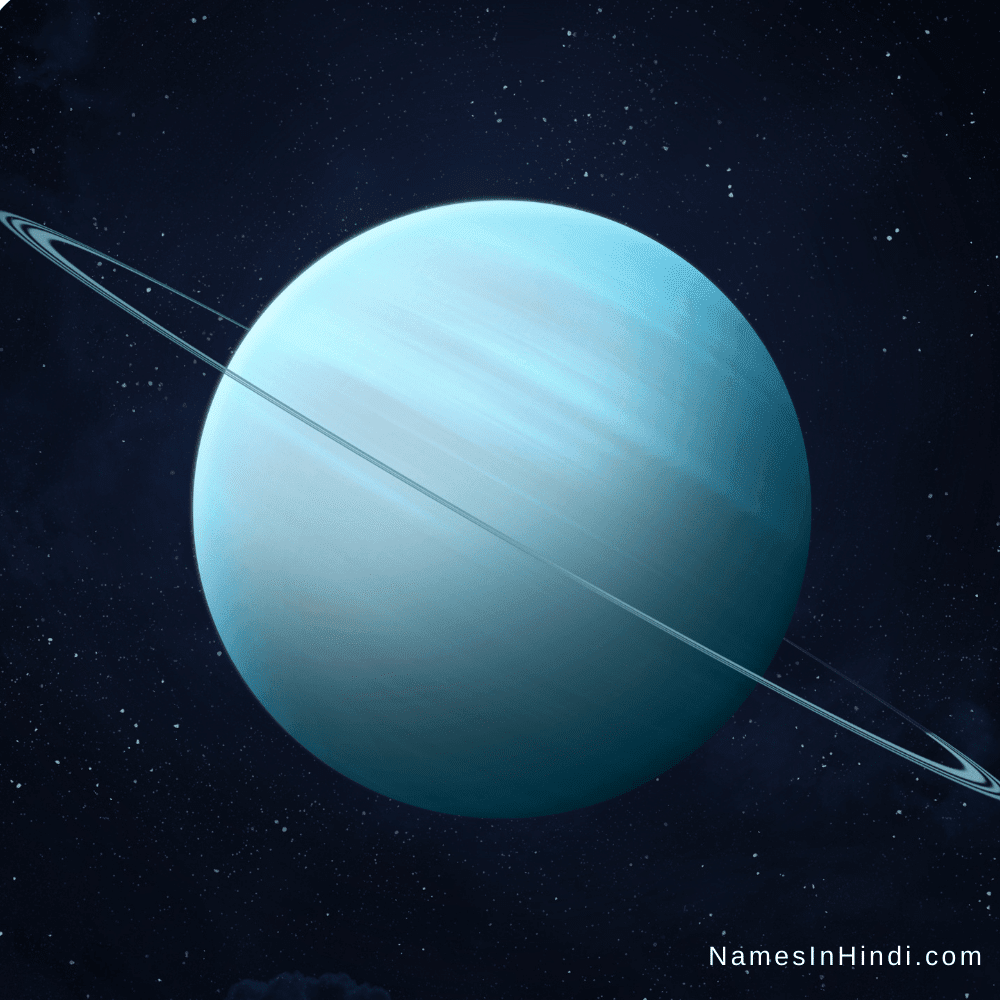
యురేనస్ సూర్యుడి నుండి ఏడవ గ్రహం. ఫలితంగా సాంద్రత 1.27 g/cm3 యురేనస్ను శని తర్వాత రెండవ అతి తక్కువ దట్టమైన గ్రహం చేస్తుంది
- యురేనస్ సౌర వ్యవస్థలో అతి శీతల గ్రహం
- యురేనస్లో 27 చంద్రులు ఉన్నారు
- యురేనస్ ఆధునిక యుగంలో కనుగొనబడిన మొదటి గ్రహం
నెప్ట్యూన్ సూర్యుడి నుండి తెలిసిన ఎనిమిదవ మరియు సుదూర సౌర గ్రహం.
- నెప్ట్యూన్ యొక్క ఆవిష్కరణ ఇప్పటికీ వివాదాస్పదంగా ఉంది:
- నెప్ట్యూన్ సౌర వ్యవస్థలో అతి శీతల గ్రహం
- నెప్ట్యూన్ మొత్తం 6 రింగ్ కలిగి ఉంది
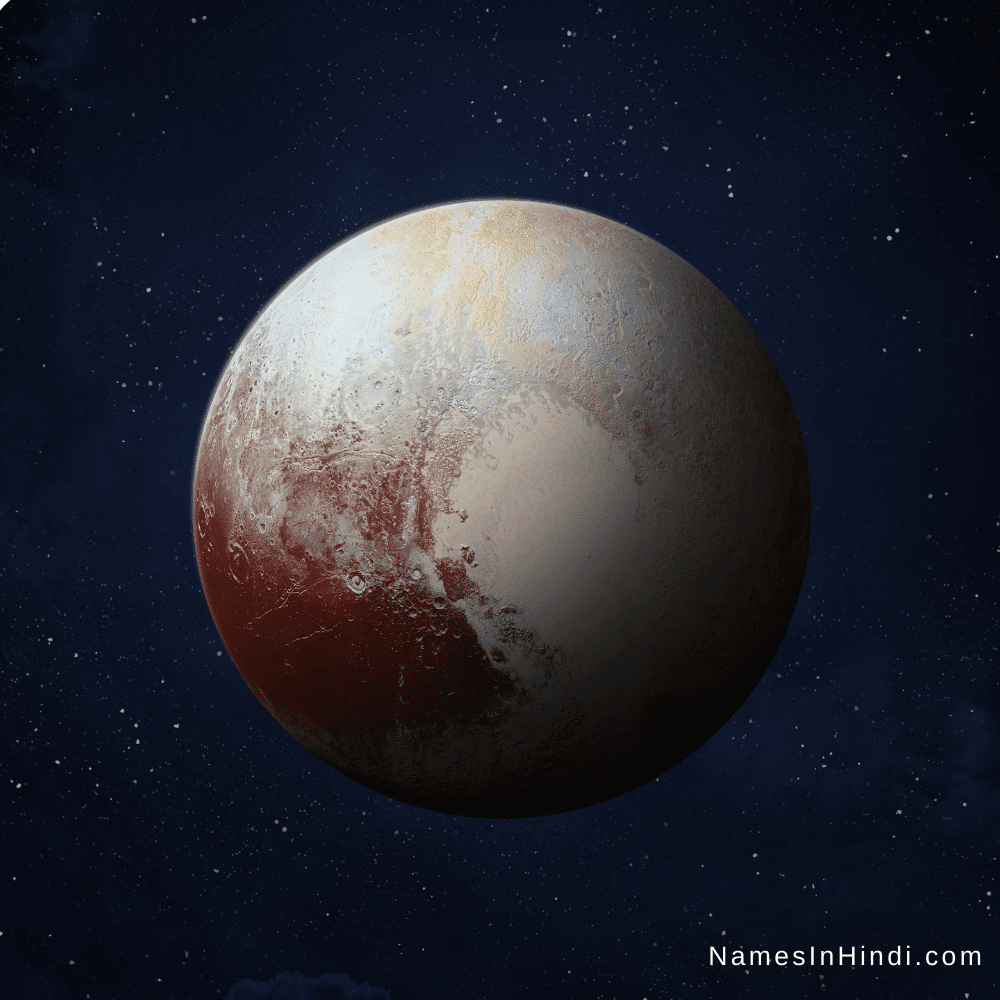
ప్లూటో అనేది కైపర్ బెల్ట్లోని మరుగుజ్జు గ్రహం. ప్లూటో 2006 లో మరగుజ్జు గ్రహ స్థితికి తగ్గించబడింది – కానీ సాధారణంగా నమ్ముతున్న కారణంతో కాదు.
- ప్లూటో సూర్యుని చుట్టూ నేరుగా తిరుగుతున్న తొమ్మిదవ అతి పెద్ద మరియు పదవ అత్యంత భారీ వస్తువు.
- ప్లూటో 75 సంవత్సరాల పాటు ఒక గ్రహం వలె వర్గీకరించబడింది. ఇది సౌర వ్యవస్థ యొక్క తొమ్మిదవ గ్రహం యొక్క శీర్షికను కలిగి ఉంది.
- ప్లూటోలో 5 తెలిసిన చంద్రులు ఉన్నారు
I hope you liked Planets name in Telugu. Please share this Planets name in Telugu | తెలుగులో గ్రహాల పేరు with everybody.
About the author
Leave a Reply Cancel reply
Your email address will not be published. Required fields are marked *
Latest Posts
Tropical fruit names: top 10 must-try fruits and their health perks.
Tropical fruits have always fascinated me, not only because of their mouth-watering flavors but also because of their amazing health benefits. As someone who enjoys trying new fruits from different parts of the world, I can confidently say that tropical fruits are a whole different experience. I’ve put together this list of the top 10…
7 Fruits You Should Be Eating for a Healthy Body and Mind
Introduction Maintaining a healthy body and mind is essential for leading a fulfilling life. While a balanced diet is crucial for overall well-being, incorporating fruits into your daily meals can provide numerous health benefits. Fruits are not only delicious and refreshing but also packed with essential nutrients, vitamins, and antioxidants that promote optimal health. In…
Water Fruits Name: The Best Fruits with High Water Content for Hydration and Health
Introduction When it comes to staying hydrated, water is undoubtedly the best choice. However, did you know that certain fruits can also contribute significantly to your daily water intake? These water-rich fruits not only provide hydration but also offer numerous health benefits. In this article, we will explore the best fruits with high water content…
Solar System Essay for Students and Children
500+ words essay on solar system.
Our solar system consists of eight planets that revolve around the Sun, which is central to our solar system . These planets have broadly been classified into two categories that are inner planets and outer planets. Mercury, Venus, Earth, and Mars are called inner planets. The inner planets are closer to the Sun and they are smaller in size as compared to the outer planets. These are also referred to as the Terrestrial planets. And the other four Jupiter, Saturn, Uranus, and Neptune are termed as the outer planets. These four are massive in size and are often referred to as Giant planets.

The smallest planet in our solar system is Mercury, which is also closest to the Sun. The geological features of Mercury consist of lobed ridges and impact craters. Being closest to the Sun the Mercury’s temperature sores extremely high during the day time. Mercury can go as high as 450 degree Celsius but surprisingly the nights here are freezing cold. Mercury has a diameter of 4,878 km and Mercury does not have any natural satellite like Earth.
Venus is also said to be the hottest planet of our solar system. It has a toxic atmosphere that always traps heat. Venus is also the brightest planet and it is visible to the naked eye. Venus has a thick silicate layer around an iron core which is also similar to that of Earth. Astronomers have seen traces of internal geological activity on Venus planet. Venus has a diameter of 12,104 km and it is just like Mars. Venus also does not have any natural satellite like Earth.
Earth is the largest inner planet. It is covered two-third with water. Earth is the only planet in our solar system where life is possible. Earth’s atmosphere which is rich in nitrogen and oxygen makes it fit for the survival of various species of flora and fauna. However human activities are negatively impacting its atmosphere. Earth has a diameter of 12,760 km and Earth has one natural satellite that is the moon.
Get the huge list of more than 500 Essay Topics and Ideas
Mars is the fourth planet from the Sun and it is often referred to as the Red Planet. This planet has a reddish appeal because of the iron oxide present on this planet. Mars planet is a cold planet and it has geological features similar to that of Earth. This is the only reason why it has captured the interest of astronomers like no other planet. This planet has traces of frozen ice caps and it has been found on the planet. Mars has a diameter of 6,787 km and it has two natural satellites.
It is the largest planet in our solar system. Jupiter has a strong magnetic field . Jupiter largely consists of helium and hydrogen. It has a Great Red Spot and cloud bands. The giant storm is believed to have raged here for hundreds of years. Jupiter has a diameter of 139,822 km and it has as many as 79 natural satellites which are much more than of Earth and Mars.
Saturn is the sixth planet from the Sun. It is also known for its ring system and these rings are made of tiny particles of ice and rock. Saturn’s atmosphere is quite like that of Jupiter because it is also largely composed of hydrogen and helium. Saturn has a diameter of 120,500 km and It has 62 natural satellites that are mainly composed of ice. As compare with Jupiter it has less satellite.
Uranus is the seventh planet from the Sun. It is the lightest of all the giant and outer planets. Presence of Methane in the atmosphere this Uranus planet has a blue tint. Uranus core is colder than the other giant planets and the planet orbits on its side. Uranus has a diameter of 51,120 km and it has 27 natural satellites.
Neptune is the last planet in our solar system. It is also the coldest of all the planets. Neptune is around the same size as the Uranus. And it is much more massive and dense. Neptune’s atmosphere is composed of helium, hydrogen, methane, and ammonia and it experiences extremely strong winds. It is the only planet in our solar system which is found by mathematical prediction. Neptune has a diameter of 49,530 km and it has 14 natural satellites which are more than of Earth and Mars.
Scientists and astronomers have been studying our solar system for centuries and then after they will findings are quite interesting. Various planets that form a part of our solar system have their own unique geological features and all are different from each other in several ways.
Customize your course in 30 seconds
Which class are you in.

- Travelling Essay
- Picnic Essay
- Our Country Essay
- My Parents Essay
- Essay on Favourite Personality
- Essay on Memorable Day of My Life
- Essay on Knowledge is Power
- Essay on Gurpurab
- Essay on My Favourite Season
- Essay on Types of Sports
Leave a Reply Cancel reply
Your email address will not be published. Required fields are marked *
Download the App


30,000+ students realised their study abroad dream with us. Take the first step today
Meet top uk universities from the comfort of your home, here’s your new year gift, one app for all your, study abroad needs, start your journey, track your progress, grow with the community and so much more.

Verification Code
An OTP has been sent to your registered mobile no. Please verify

Thanks for your comment !
Our team will review it before it's shown to our readers.

- School Education /
Essay on Solar System for School Students

- Updated on
- Dec 23, 2023

Essay on Solar System: Our solar system consists of one Sun and eight (formerly nine) planets. These eight planets are gravitationally bound by the Sun on their orbits. Apart from these eight planets, there are more than 210 known planetary satellites, asteroids, comets, and other icy bodies that are assembled in the Solar system.
The first four planets are called terrestrial planets (Mercury, Venus, Earth, and Mars) the two gas planets (Jupiter and Saturn), and the other remaining ones are ice giants (Neptune and Uranus.)
Table of Contents
- 2 Inner Planets (Terrestrial Planets):
- 3 Outer Planets (Gas Giants)
- 5 FAQs
Learn about the smallest planet in our solar system
The Sun is the primary source of light and energy and is about 93 million miles from the Earth. It is the only star in our solar system and one of the more than 100 billion stars in the Milky Way. The surface of the Sun is about 5,500 degrees Celsius (10,000 degrees Fahrenheit) hot and the temperature reaches 15 million Celsius (27 million Fahrenheit).
In terms of age and size, the Sun is 4.5 billion years old, composed of hydrogen and helium with a diameter of about 865,000 miles which is approximately 1.4 million kilometres.
Inner Planets (Terrestrial Planets):
The planets that are made of rocks and metals are known as Inner Planets or Terrestrial Planets. These planets are comparatively small in size compared to the other outer planets. The description of these four planets is as follows:
1. Mercury—The Swift Planet
Mercury is the swiftest planet in our solar system which completes an orbit around the Sun in just 88 Earth days. Its proximity to the Sun contributes to extreme temperature variations, from scorching highs to freezing lows.
With minimal atmosphere, Mercury lacks the protective blanket found on the Earth, exposing its surface to harsh solar radiation.
2. Venus—The Evening Star or Morning Star
Venus, which is often referred to as the evening star or morning star, depends on its position relative to the Sun. When Venus is trailing the Sun, it is the evening star, visible after the sunset. Conversely, when ahead of the Sun, it is the morning star, appearing before sunrise.
This dual identity arises from Venus´s orbit, positioning it closer to the Sun than Earth and causing varied visibility during different parts of the orbital journey.
3. Earth—Blue Planet
The home planet to all living things is Earth. It is the only planet that is known for the existence of life.
The surface of the Earth is made up of the crust, the core, and the mantle. It is a giant rocky planet with a circumference of about 40,075 kilometers; 71 percent or ¾ th of the Earth is covered with oceans and seas. A large area covered with water makes this planet a Blue Planet.
4. Mars—Red Planet
The fourth planet of the solar system, Mars, is the most explored planet by the National Aeronautics and Space Administration (NASA.) The reason behind so many missions or research for Mars is to hope for the existence of extraterrestrial life on the planet.
Apart from the possibility of life on Mars, the planet is also known for its presence of iron oxide that turns the planet reddish in appearance.
Want to know more about our Planet Earth? Read Essay on Earth for more information.
Outer Planets (Gas Giants)
5. Jupiter—King of Planets
Jupiter is the first planet of our solar system in the category of outer planets, also known as gas giants. According to NASA, the U.S. government agency, the planet’s size is more than twice that of all other planets combined.
Except for Jupiter’s size, the solar system’s first outer planet is made up of leftover gases from the formation of the Sun.
6. Saturn—Ringed Planet
The sixth planet from the Sun is Saturn. It is also known as the ringed planet and the second-largest solar system planet.
The three distinctive features that make Saturn different from other planets are its huge 145 moons, visibility from the Earth with the naked eye, and the seven main rings named D, C, B, A, F, G, and E from the outward side of the planet.
7. Uranus—Ice Giant
The seventh planet from the Sun, Uranus, is one of the two ice giants in the list of the outer solar system. The planet is featured with the third largest diameter which makes the planet the third largest in the solar system.
Other than massive size, Uranus is made up of three dense icy materials, methane, ammonia, and water – above all a small rocky core.
8. Neptune—Blue Giant
The third largest and eighth planet of the solar system is Neptune. According to NASA, the farthest planet from the Sun is more than 17 times Earth’s size and nearly 58 times the dimensions of Earth’s volume.
The cool blue planet, due to the absorption of infrared light by the planet’s Methane atmosphere, comprises a core with the capacity to pick up a lot of gas, making Neptune impossible for the existence of life.
Also Read: Essay on Space Exploration
Our Solar system is incomplete without the Moon, a planetary large natural object that travels around the Earth. However, the Moon does not make its light but it reflects the light of the sunlight.
The total number of moons in our Solar system is 290, out of which one Moon belongs to Earth, two to Mars, 27 to Uranus, 95 to Jupiter, 146 to Saturn, 5 to dwarf planet Pluto, and 14 to Neptune.
The solar system consists of the Sun, terrestrial planets, gas giants, Earth’s Moon, celestial bodies , and various other objects. The unique formation and dynamics continue to amaze scientists offering a glimpse into the vastness and beauty of our cosmic neighbourhood.
Ans: The Nebular Theory, which states that the solar system is made up of interstellar clouds of dust and gas, is the best theory for the solar system.
Ans: Arybhatta, the mathematician and astronomer was the first to discover that the Earth revolves around the Sun.
Ans: There is only one solar system in the universe.
Ans: Our solar system consists of only stars and we know it as The Sun.
Ans: The size of the solar system is almost 12 trillion miles, nearly 2 light years.
Related Articles:
For more information on such interesting topics, visit our essay writing page and follow Leverage Edu .
Deepika Joshi
Deepika Joshi is an experienced content writer with expertise in creating educational and informative content. She has a year of experience writing content for speeches, essays, NCERT, study abroad and EdTech SaaS. Her strengths lie in conducting thorough research and ananlysis to provide accurate and up-to-date information to readers. She enjoys staying updated on new skills and knowledge, particulary in education domain. In her free time, she loves to read articles, and blogs with related to her field to further expand her expertise. In personal life, she loves creative writing and aspire to connect with innovative people who have fresh ideas to offer.
Leave a Reply Cancel reply
Save my name, email, and website in this browser for the next time I comment.
Contact no. *


Connect With Us

30,000+ students realised their study abroad dream with us. Take the first step today.

Resend OTP in

Need help with?
Study abroad.
UK, Canada, US & More
IELTS, GRE, GMAT & More
Scholarship, Loans & Forex
Country Preference
New Zealand
Which English test are you planning to take?
Which academic test are you planning to take.
Not Sure yet
When are you planning to take the exam?
Already booked my exam slot
Within 2 Months
Want to learn about the test
Which Degree do you wish to pursue?
When do you want to start studying abroad.
January 2024
September 2024
What is your budget to study abroad?

How would you describe this article ?
Please rate this article
We would like to hear more.
Have something on your mind?

Make your study abroad dream a reality in January 2022 with
India's Biggest Virtual University Fair

Essex Direct Admission Day
Why attend .

Don't Miss Out
- Essay On Solar System
Essay on Solar System
500+ words essay on solar system.
The Sun and all other planets and celestial bodies that revolve around it are together called a solar system. Our solar system consists of eight planets and an asteroid belt. These planets are termed inner and outer planets. Earth, Venus, Mercury and Mars are considered inner planets closer to the Sun and smaller, also known as terrestrial planets. The remaining four planets, Jupiter, Saturn, Uranus, and Neptune, are outer planets that are massive and termed giant planets.
This essay will discuss our solar system and give a detailed summary of the eight planets.
Planets are large celestial bodies that revolve around the Sun in fixed orbits. They don’t have their own lights and use the Sun’s light to reflect light. As stars, planets don’t twinkle because they are closer to us. The planets Mercury, Venus, Earth and Mars, remain in the inner solar system, and the outer solar system planets are Jupiter, Saturn, Uranus, and Neptune. Among all the planets, Earth is the only planet where life exists.
Satellites are objects that revolve around the Sun. Satellites can be categorised into two types – natural and man-made. For example, the Moon is a natural satellite that revolves around the Earth.
Man-made Satellite
Man-made satellites are artificial satellites sent to space to gather information about other planets. The first artificial satellite sent by India into space is Aryabhatta.
Asteroids are small, rocky objects that revolve around the Sun. Most asteroids are made of different rocks, but some have clays or metals, such as nickel and iron. Asteroids have irregular shapes and are not round-like planets.
Comets are irregularly shaped bodies composed of non-volatile grains and frozen gases. For example, Haley’s comet is a comet that occurs once every 76 years.
Dwarf planets
Dwarf planets are heavenly bodies that are too small to be considered a planet but too large to fall under smaller categories. Example: Pluto
Our Solar System
The nearest and the smallest planet in our solar system is Mercury. The planet is hidden under the Sunlight, which can only be seen before sunrise or sunset.
Venus is the closest and brightest planet in our solar system other than the Sun and the Moon. It is known as the morning and evening star because it appears in the eastern sky before Sunrise and in the western sky after sunset.
In our solar system, the Earth is the only planet that favours life. On this planet, life is possible because of conditions like water and atmosphere and the favourable distance from the Sun. The Earth’s rotation of axis is tilted, due to which we witness seasonal changes, and the Moon is the only natural satellite of planet Earth. From outer space, the colour of the Earth appears bluish-green as light from the landmass and water bodies gets reflected.
Mars is the fourth planet from the Sun. It is often called the “Red Planet” because the reddish iron oxide prevalent on its surface gives it a reddish appearance. Mars has two natural satellites.
Jupiter is the largest planet in our solar system. So big that it can accommodate 1300 piles of Earth. However, it is only 318 times heavier than Earth. Jupiter has at least 67 Moons. Jupiter has a big red spot, a gigantic one twice as wide as the Earth, that has been swirling for many years.
Saturn is the second-largest planet in our solar system. It is unique as it has thousands of beautiful rings. Saturn has numerous Moons.
Uranus and Neptune
Uranus rotates from west to east. Its axis has a huge tilt, making it look like it’s spinning on its side. Neptune is the eighth and farthest planet in our solar system. It has powerful winds, which are more potent than any other planet in the solar system.
Scientists and astronomers have been studying our solar system for centuries, and the findings are pretty interesting. Various planets that form a part of our solar system have their unique geological features, and all are different from each other in several ways. But, unfortunately, after years of exploration, the Universe has still more mysteries that are left unknown.
From our BYJU’S website, students can also access CBSE Essays related to different topics. It will help students to get good marks in their exams.
Frequently Asked Questions on Solar system Essay
Are there any other systems present in the universe.
Research has shown that there are several other systems existing in the universe other than our Solar system.
Does the solar system only consist of planets?
No, the solar system also consists of dwarf planets, asteroids, comets, etc.
Has the Solar system fully been discovered?
Although there are several types of research going on, there are still many undiscovered and unreachable regions of the Solar system.
Leave a Comment Cancel reply
Your Mobile number and Email id will not be published. Required fields are marked *
Request OTP on Voice Call
Post My Comment
- Share Share
Register with BYJU'S & Download Free PDFs
Register with byju's & watch live videos.

Counselling

Essay on Solar System and Planets in English for Children and Students

Table of Contents
Our solar system consists of a sun, eight planets, satellites, dwarf planets, asteroids, meteoroids and comets. The eight planets are Mercury, Venus, Earth, Mars, Jupiter, Saturn, Uranus and Neptune. Earlier it had nine planets. However, Pluto, the ninth planet does not meet the latest standards set for the planets. It has now been termed as a dwarf planet thereby increasing the count of the dwarf planets in our solar system to five.
Fill Out the Form for Expert Academic Guidance!
Please indicate your interest Live Classes Books Test Series Self Learning
Verify OTP Code (required)
I agree to the terms and conditions and privacy policy .
Fill complete details
Target Exam ---
Long and Short Essays on Solar System and Planets in English
Here are long and short essay on solar system and planets in English, to help you with the topic in your exams or essay writing/debate competitions.
After going through these solar system and planets essay, you will know about the formation of solar system, when the planets were discovered, the dwarf planets, satellites and characteristics of individual planets etc.
All in all, these Solar System and Planets Essays will make you familiar with the universe we are a part of, so much so, that you can confidently take part in debates, talk shows and discussions, on our solar system and its planets. Please go through these essays to select your needed ones:
Short Essay on Solar System and Planets (200 words)
The universe is massive. It is much bigger than we can imagine and our solar system is just a small part of it. Our solar system houses a big, bright star called the Sun. The Sun is a rich source of electromagnetic energy that it exudes in the form of light and heat. There are eight planets in our solar system namely, Mercury, Venus, Earth, Mars, Jupiter, Saturn, Uranus and Neptune. These planets revolve around the sun in a fixed path referred to as the orbit. Several other smaller objects also move around the sun.
Many planets in our solar system have natural satellites called the moon. While Earth has one moon, Mars has two, Neptune has 14 moons, Uranus has 27 moons, Saturn has 62 moons and Jupiter has as many as 79 moons. Even the dwarf planet Pluto has 5 moons. Mercury and Venus, on the other hand, do not have any moon. Just as the planets move around the Sun in a fixed path, moons orbit around their respective planets.
In addition to the Sun, planets and moons, our solar system consists of several other celestial bodies called the comets, asteroids and meteoroids. While our solar system has only one star, many other solar systems are known to have at least two stars.

Essay on Solar System and Planets (300 words)
Introduction
Our solar system was formed billions of years ago. It consists of numerous celestial bodies including planets, satellites, asteroids, comets, meteorites and a massive star. Our solar system forms a part of the Milky Way Galaxy. Various celestial bodies in our solar system revolve around the Sun directly or indirectly.
The Formation of the Solar System
It is believed that around 4.6 billion years ago, the gravitational collapse of a giant interstellar molecular cloud gave shape to our solar system. Major part of the collapsing mass collated at the centre, that formed the Sun. The remaining mass flattened into a proto planetary disk and formed the planets, satellites and other objects in the solar system. Planet Jupiter, the biggest planet in our solar system, contains major chunk of the remaining mass.
Our solar system is believed to have evolved substantially since its inception. Many new moons have come into shape from the gases and dust around the planets. Several collisions among the celestial bodies have also occurred and still continue to occur thereby contributing to the evolution of the solar system.
The Discovery of Planets
For thousands of years astronomers believed that Earth was stationary and formed the centre of the universe. It was in the 18 th century that the astronomers accepted that Earth orbits around the Sun.
In 2 nd millennium BC, Mercury, Venus, Mars, Jupiter and Saturn were identified by ancient Babylonian astronomers. Later, Nicolaus Copernicus also identified them. Uranus was discovered by famous astronomer, Sir William Herschel in 1781. Neptune was discovered by English astronomer and mathematician, John Couch Adams in the year 1846. It was in the year 1930 that the ninth planet, Pluto was discovered. Astronomer Clyde Tombaugh discovered Pluto which is now identified as a dwarf planet.
The study of the universe and heavenly bodies is one of the most fascinating studies. Through continuous research, astronomers have found out several surprising facts about the universe and our solar system. Our solar system is ever evolving and newer facts are being discovered and studied by researchers year after year.
Essay on Solar System and Planets (400 words)
Celestial bodies are objects that naturally occur in the observable universe. These include the stars, natural satellites, planets, asteroids, galaxies, comets and meteorites. Our solar system consists of a Sun, eight planets their moons, five dwarf planets and asteroids among other celestial bodies. Brief information about each of the celestial bodies present in our solar system is given below.
The Sun is the only star on our solar system. It is stationary and the other objects in our solar system revolve around it. It is the most massive component of our solar system. Research states that it comprises of 99.86% of the entire mass of our solar system.
The Planets
There are eight planets in the solar system. These are Mercury, Venus, Earth, Mars, Jupiter, Saturn, Uranus and Neptune. The planets have been divided into two groups – Terrestrial Planets and Giant Planets. Planets vary based on their size, geological features, mass, number of satellites and various other factors. No traces of life have been found on any planet apart from Earth.
The Dwarf Planets
There are five dwarf planets in our solar system. These are Pluto, Ceres, Haumea, Eris and Makemake. While Ceres is situated in the asteroid belt others are located in the outer solar system. Dwarf planets are quite like the full size planets. The only difference is that the full size planets have cleared the objects in the area of their orbit whereas the dwarf planets have not.
Astronomers claim that there are six other objects in our solar system that are akin to the dwarf planets. These may be officially recognized as dwarf planets in the times to come.
There are a total of 193 moons in our solar system as per a research conducted in the year 2008. Out of these, 185 moons orbit around the full size planets and 8 moons revolve around the dwarf planets. Moons come in various sizes and shapes. They differ from each other in various ways. Most of the moons are airless. However, there are some that have atmosphere. Some even have hidden oceans. Each planet has different number of moons. Earth has just one moon while Jupiter has the highest number of moons. It has a total of 79 moons. Moons orbit around their respective planets.
In addition to the aforementioned, there are many other celestial bodies in our solar system. These include the Interplanetary Medium, Kuiper Belt, Oort Cloud, asteroids and meteoroids. The Kuiper Belt and Oort Cloud comprise of billions of icy objects. Each celestial body in our solar system is unique with its own set of features.
Essay on Solar System and Planets (500 words)
Our Solar System – A Small Part of the Universe
Our solar system is huge but nothing compared to the size of the universe. The universe is humongous and is believed to encompass numerous solar systems consisting of several planets, stars and other heavenly bodies. The universe is all space and time and it is not possible to calculate its spatial size. The size of the observable universe is estimated to be 93 billion light years.
The Galaxies and Solar Systems
Research shows that just like our solar system there are numerous other solar systems in the universe. The universe consists of billions of galaxies. Each of these galaxies has uncountable stars and many of these stars are said to have solar systems of their own. The size of the stars, the number of planets, the geological features of the planets, the number and size of the natural satellites vary from solar system to solar system.
Our solar system is a part of the Milky Way Galaxy. The Milky Way Galaxy is huge. It has more than 100 billion stars. More than 2500 stars with planets orbiting around them have been discovered in the Milky Way Galaxy. The study in this field is going on constantly. There are numerous planetary systems that the scientists and astronomers are yet to discover.
Our Solar System
Our solar system encompasses Sun which is a big ball of fire. Sun is stationary and forms the centre of our solar system. Eight planets namely, Mercury, Venus, Earth, Mars, Jupiter, Saturn, Uranus and Neptune revolve around the Sun. Each of these planets move in a fixed path in its own set speed. The geological features of each of these planets are different. While Neptune is freezing cold, Venus is scorching hot. Similarly, while Jupiter is massively big, Mercury is comparatively very small in size. The planet is even smaller than some of the moons in our solar system. The atmosphere of each of the planets is different. Planets have been divided into two groups and the features of the planets within each group also vary vastly.
Earth is the only planet in our solar system which is known to have life. It is filled with vast oceans and gases such as oxygen and nitrogen that render life. Mars is said to share some similarities with Earth. Evidences of ice have been found on the planet. The planet is extremely cold and thus life there seems impossible. However, it is believed that the planet was once wet and warm and life existed here. Astronomers are studying this planet closely and have found many interesting facts about the same. These planets have different numbers of natural satellites.
Apart from this, there are five dwarf planets in our solar system. These are Ceres, Haumea, Makemake, Eris and Pluto. Earlier there were nine planets in our solar system and Pluto was one among them. However, it has now been termed as a dwarf planet.
The Universe is vast and there is a lot to study and discover. Scientists have studied our solar system deeply for centuries and are now moving beyond to study other solar systems and galaxies. A lot of interesting facts about this enchanting universe are likely to surface in the times to come.

Long Essay on Solar System and Planets (600 words)
Our solar system consists of eight planets that revolve around the Sun, which is central to our solar system. These planets have broadly been classified into two categories – inner planets and outer planets. There are four inner planets, Mercury, Venus, Earth and Mars. The inner planets are closer to the Sun and smaller in size as compared to the outer planets. These are also referred to as the Terrestrial planets. Jupiter, Saturn, Uranus and Neptune are termed as the outer planets. These are massive in size and are often referred to as Giant planets.
Here is brief information about each of these planets:
The smallest planet in our solar system, Mercury is also the closest to the Sun. Its geological features consist of lobed ridges and impact craters. Being closest to the Sun, Mercury’s temperature sores extremely high during the day time. It can go as high as 450 degree Celsius. Surprisingly, the nights here are freezing cold.
Mercury has a diameter of 4,878 km. It does not have any natural satellite.
Venus is said to be the hottest planet of our solar system. It has a toxic atmosphere that traps heat. It is also the brightest planet and is visible to the naked eye. It has a thick silicate layer around an iron core which is similar to that of Earth. Astronomers have seen traces of internal geological activity on this planet.
Venus has a diameter of 12,104 km. Just like Mars, Venus also does not have any natural satellite.
Earth is the largest inner planet. Two-third of this planet is covered with water. It is the only planet in our solar system where life is known to exist. Earth’s atmosphere, which is rich in nitrogen and oxygen, makes it fit for the survival of various species of flora and fauna. However, human activities are having negative impact on its atmosphere.
Earth has a diameter of 12,760 km. It has one natural satellite, the moon.
Mars, the fourth planet from Sun, is often referred to as the Red Planet. The iron oxide present on this planet gives it a reddish appeal. The planet is cold and has geological features similar to that of Earth. This is the reason why it has captured the interest of astronomers like no other planet. Traces of frozen ice caps have been found on the planet.
Mars has a diameter of 6,787 km and two natural satellites.
Jupiter is the largest planet in our solar system. It has a strong magnetic field. It largely consists of helium and hydrogen. It has a Great Red Spot and cloud bands. A giant storm is believed to have raged here for hundreds of years.
Jupiter has a diameter of 139,822 km and has as many as 79 natural satellites.
Saturn is known for its ring system. These rings are made of tiny particles of ice and rock. Its atmosphere is quite like that of Jupiter as it is also largely composed of hydrogen and helium.
Saturn has a diameter of 120,500 km. It has 62 natural satellites that are mainly composed of ice.
Uranus, the seventh planet from Sun, is the lightest of all the giant, outer planets. It has a blue tint which is because of the presence of Methane in the atmosphere. Its core is colder than the other giant planets. The planet orbits on its side.
Uranus has a diameter of 51,120 km and 27 natural satellites.
The last planet in our solar system, Neptune is also the coldest of all. It is around the same size as the Uranus but is much more massive and dense. Neptune’s atmosphere is composed of helium, hydrogen, methane and ammonia. It experiences extremely strong winds. It is the only planet in our solar system which is found by mathematical prediction.
Neptune has a diameter of 49,530 km. It has 14 natural satellites.
Scientists and astronomers have been studying our solar system for centuries and the findings are quite interesting. Various planets that form a part of our solar system have their own unique geological features and are different from each other in several ways.
More Information:
- Essay on Role of Science in Making India
- Essay on Wonders of Science
- Essay on Science and Technology
Related content
Talk to our academic expert!
Language --- English Hindi Marathi Tamil Telugu Malayalam
Get access to free Mock Test and Master Class
Register to Get Free Mock Test and Study Material
Offer Ends in 5:00

IMAGES
VIDEO
COMMENTS
NASA's Solar System Simulator; NASA/JPL Solar System main page Archived 2016-12-17 at the Wayback Machine; The Nine Planets - Comprehensive Solar System site by Bill Arnett; SPACE.com: All About the Solar System; Illustration of the distance between planets Archived 2009-12-09 at the Wayback Machine; Illustration comparing the sizes of the ...
Study Material in Telugu సోలార్ సిస్టమ్ : గ్రహాలు మరియు ఉపగ్రహాలు by తెలుగు ఎడ్యుకేషన్ డిసెంబర్ 20, 2022 3,962 Views
భూమి; భూమి రంగుల ఫోటో - అపోలో 17 నుండి తీసినది. ప్రఖ్యాత "నీలి గోళీ" భూమి ఫోటో - అపోలో 17 నుండి తీసినది.
In This Video We Will Know About Solar System DocumentaryScripting and Editing :- ManikantaVoice Over :- *J.S.ARVIND, JS ARVIND YouTube ...
Open a Free Demat Account: https://upstox.com/open-account/?f=2BAJRXFollow Us on:⯈Website: www.telugubadi.in⯈YouTube: https://goo.gl/vCPwXG⯈Facebook...
సూర్యుడు; సూర్యుడు: పరిశీలన డేటా; సగటు దూరం భూమి నుంచి: 1.496 × 10 11 m 8.31 min at light speed: దృశ్య ప్రకాశం (V) : −26.74 m: Absolute magnitude
Get access to the latest Chapter 01 : The Universe - The Solar System Part 10 (in Telugu) prepared with APPSC and TSPSC Live course curated by Venkatalakshminarayana Kudumula on Unacademy to prepare for the toughest competitive exam.
#solarsystem why Pluto is not consider a planethttps://youtu.be/7eIRl2iYWPUSolar system explanation in teluguSolar system teluguSolar system in teluguHow sol...
16 lessons • 2h 49m. 1. Course Overview (in Telugu) 0:58mins. 2. The Earth in the Solar System (in Telugu) 14:23mins. 3. Globe : Latitudes and Longitudes (in Telugu)
8 Planets Name in Telugu and English| తెలుగులో గ్రహాల పేరు. Some amazing facts exist about our solar system. The planets within the Solar System are all unique in their characteristics and behaviours. Here we have compiled some of the famous facts about each of the 8 planets in our Solar System.
500+ Words Essay on Solar System. Our solar system consists of eight planets that revolve around the Sun, which is central to our solar system. These planets have broadly been classified into two categories that are inner planets and outer planets. Mercury, Venus, Earth, and Mars are called inner planets. The inner planets are closer to the Sun ...
Previous Year Papers; Static GK in Telugu; Back Search for: Telugu govt jobs » Study Material » సౌర ... Download Solar System PDF in Telugu . మరింత చదవండి: తాజా ఉద్యోగ ప్రకటనలు ...
Telugu. Bengali. Marathi. Malayalam. Tamil. Home. General Knowledge. ... Objective Question with Answer for Solar System - ముఫ్త్ [PDF] డౌన్లోడ్ కరెన్ ... UPSC CSE Previous Year Papers SSC CGL Exam Previous Year Papers UGC NET Previous Year Papers Delhi Police Constable Previous Year Papers;
పొందండి Solar System సమాధానాలు మరియు వివరణాత్మక పరిష్కారాలతో బహుళ ...
This is a brief explanation of Solar System in Telugu language. Hope you guys enjoyed and was informative. Subscribe the channel for more.SUBSCRIBE(FREE): ht...
10 shares. Essay on Solar System: Our solar system consists of one Sun and eight (formerly nine) planets. These eight planets are gravitationally bound by the Sun on their orbits. Apart from these eight planets, there are more than 210 known planetary satellites, asteroids, comets, and other icy bodies that are assembled in the Solar system.
The Earth in The Solar System (in Telugu) Lesson 2 of 8 • 10 upvotes • 8:05mins. Bano S. Helpful for competitive exam. (Telugu) NCERT Cass 6th Geography. 8 lessons • 1h 3m. 1. Introduction (in Telugu) 2:42mins.
The solar system includes one star, eight planets, five dwarf planets, at least 290 moons, over 1.3 million asteroids, and around 3,900 comets. It is located in the Orion Arm of the Milky Way galaxy. Our solar system moves around the galaxy's center at about 515,000 miles per hour (828,000 kilometers per hour) and takes about 230 million ...
pulling force that binds the solar system. The sun is the ultimate source of heat and light for the solar system. But that tremendous heat is not felt so much by us because despite being our nearest star, it is far away from us. The sun is about 150 million km away from the earth. Planets There are eight planets in our solar system. In order of
Published by Tirumalesh Kumar Dandamudi, Viswa Infotech, Sphoorthi Publications, Vijayawada, A.P. www.viswainfo.com, [email protected], Voice Jonn...
500+ Words Essay on Solar System. The Sun and all other planets and celestial bodies that revolve around it are together called a solar system. Our solar system consists of eight planets and an asteroid belt. These planets are termed inner and outer planets. Earth, Venus, Mercury and Mars are considered inner planets closer to the Sun and ...
Short Essay on Solar System and Planets (200 words) The universe is massive. It is much bigger than we can imagine and our solar system is just a small part of it. Our solar system houses a big, bright star called the Sun. The Sun is a rich source of electromagnetic energy that it exudes in the form of light and heat.
Essays on Solar System In Telugu Pdf for students to reference for free. Use our essays to help you with your writing 1 - 60.